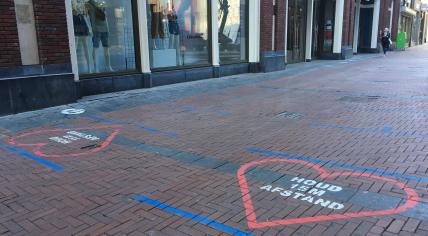
Slightly fewer vacant stores despite coronavirus
While physical stores had a hard time during the coronavirus lockdowns, the vacancy rate of stores in the Netherlands actually decreased slightly. At the start of of this year, 7.5 percent of retail properties were empty. In August that decreased to 7.2 percent - even less than the 7.4 percent vacancy in pre-pandemic March 2020, data from Locatus showed, NOS reports.
On August 1, there were 600 fewer empty retail properties than on January 1. This may be explained by the government's coronavirus support packages keeping struggling businesses afloat. But there are major differences between the different shopping areas, Locatus said.
Shops that provide daily groceries remained relatively untouched by the pandemic restrictions. "In fact, due to the closure of the catering industry, many supermarkets and specialty stores experienced significant turnover growth," Gertjan Slob of Locatus said to NOS. Shopping areas that mainly focus on daily shopping saw the vacancy rate drop from 9.1 percent in January to 8.4 percent now. Furniture and do-it-yourself stores also did well during the lockdowns, resulting in the vacancy rate on furniture boulevards dropping from 6.7 to 6.3 percent.
The 17 large city centers, on the other hand, saw their vacancy rate increase from 7.9 percent to 8.3 percent. "Before corona, these centers did relatively well. But the increase in online purchases, avoidance of crowded places, and the absence of foreign tourists is now felt the hardest here," Slob said to the broadcaster. He expects that the pandemic will be a game changer for the large city centers. "Despite the high number of vaccinated people, we don't seem to be rid of corona for the time being. When people go shopping now, they prefer to stay close to home, in a place where it is not too busy and where they can get to with their own transport."
